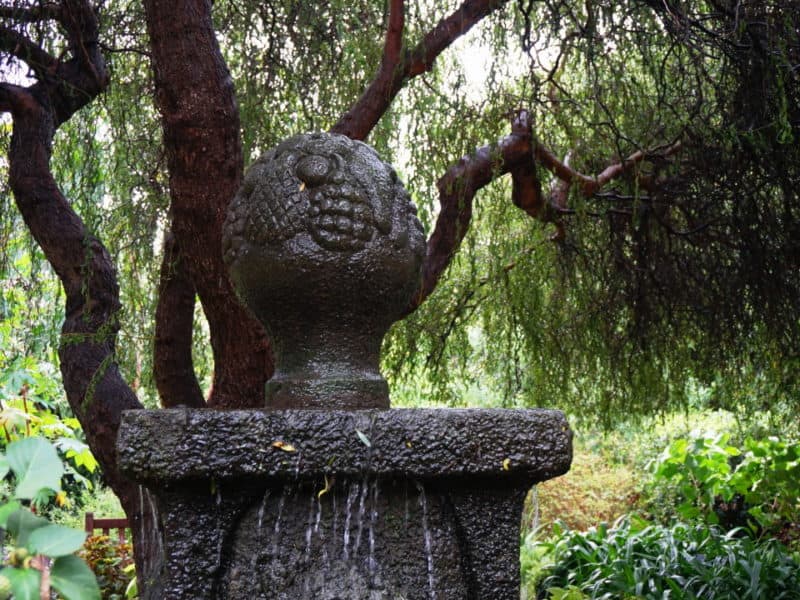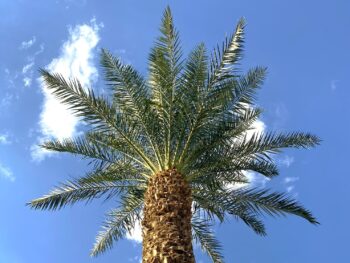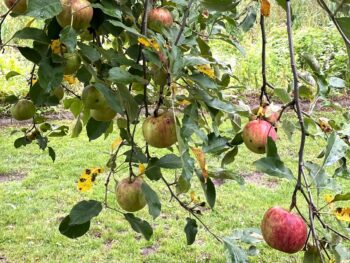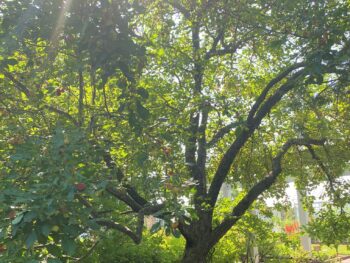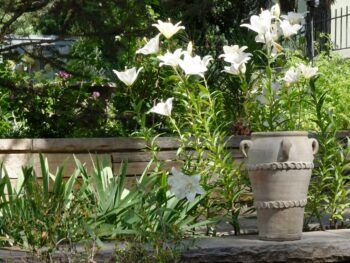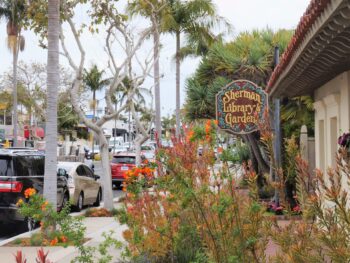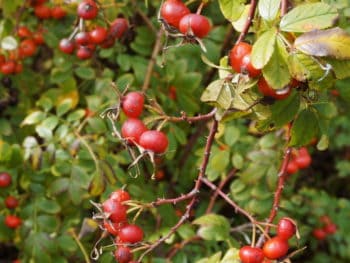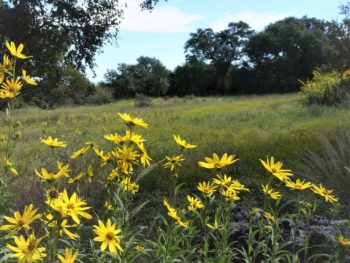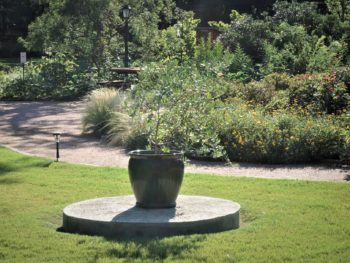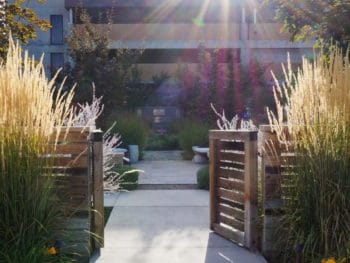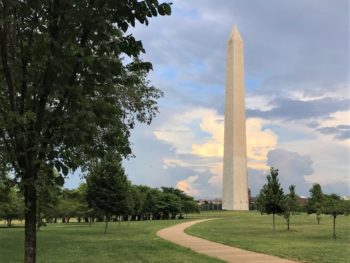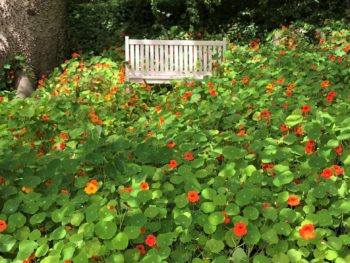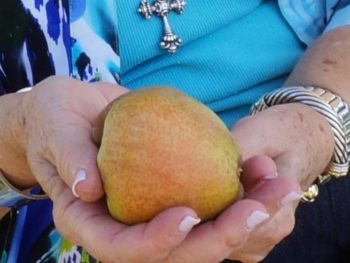San Antonio’s Sacred Garden, a sheltered, hidden plot in the heart of the San Antonio Botanical Garden, holds a treasure trove of Biblical plants, a must-see for those who seek out the holiness of gardens. Actually, with a similar latitude and need for water savviness as the Levant, plants from the Bible are easy to discover throughout this southwestern public refuge. Enjoy snapshots from my recent visit and God’s Words to go with them.
Garden Entrance

Prelude to entering the Sacred Garden, find a gracious greeting at the Botanical Garden entrance gate of papyrus, populating water’s edge as papyrus do. The plants stand fluffy and tall along the featured waterfall gushing a reminder of water’s precious refreshment—a soothing quench for those in both geographies, Texans and Middle Easterners. The contrast of desert and well-watered garden is a constant theme in the Scriptures and a daily truth in Texan life as well:
The Lord will guide you always; he will satisfy your needs in a sun-scorched land and will strengthen your frame. You will be like a well-watered garden, like a spring whose waters never fail.
Isaiah 58:11 NIV
Funny though, I happened to visit on a rainy day (there have been many this fall!)—no sun-scorching for me, thank you, Lord!

This happy pair was perched along the way as I moved through the garden, feathers ruffled in the morning’s raindrops.

Click this link for more on the water saving practices in place at the San Antonio Botanical Garden
Sacred Garden


To one side, discover an apricot tree and a logical explanation for why the apple always gets the bad rap for tempting the downfall of mankind.

Toward the rear, find a subtle vignette of Jonah’s sitting down under the shade of a “leafy plant.” The fast-growing castor bean is most-often credited as the species that provided Jonah some temporary relief. In this garden, a bench is situated under a stand of castor bean, a perfect place to sit and pout as Jonah did. Watch out for worms!


Moving onward and upward, a path leads visitors through an overgrown olive grove, past bay laurel, lush myrtle shrubs, and thriving Christ’sThorn plants.
I was especially glad to see the Aleppo pine on the back hillside, their form the ultimate in asymmetry, its branches growing “somewhat whorled,” as Harold N. Moldenke described in Plants of the Bible.
He let it grow among the trees of the forest, or planted a pine, and the rain made it grow.
Isaiah 44:14 NIV
Tree of Life and a River Watering
My favorite moment in this Biblical collection is the design expression of the tree of life and the river of life, embodying the Garden of Eden…
The Lord God made all kinds of trees grow out of the ground—trees that were pleasing to the eye and good for food. In the middle of the garden were the tree of life and the tree of the knowledge of good and evil. A river watering the garden flowed from Eden; from there it was separated into four headwaters.
Genesis 2:9-10 NIV
…center point of the sacred space yet asymmetrically arranged, tension-balanced beautifully. Like the rooftop garden at the Museum of the Bible, the tree of life is represented as a willow, a riparian species again embodying our thirst for life-giving water, physical thirst patterning our spiritual thirst. The river is represented in an ancient-textured fountain statue, a fruit basket clothed in water’s constant trickle. It appears as if it has been there forever, gesturing God’s continuous overflowing abundance and fruitfulness.
You crown the year with your bounty, and your carts overflow with abundance.
Psalm 65:11 NIV
Zachry Foundation Culinary Garden

Working my way back through the garden, I ended my day in the working garden, the newly opened Zachry Foundation Culinary Garden. This section reveals a multitude of delight for God’s Word gardeners, showcasing a nearly complete display of the seven species: wheat, barley, vines, figs, pomegranates, olive oil, and date honey.

Let Us Know!
Do you enjoy visiting and discovering Biblical plants in the public landscape? Plantings like this one in San Antonio are found at many public gardens across our nation. My visits so far: See Buffalo, Los Angeles/Pasadena, and Pittsburgh chronicled at Garden in Delight.
Let us know! Comment here that you share a desire to revive these plantings and continue to make this Biblical heritage available for generations to come.
One generation commends your works to another; they tell of your mighty acts.
Psalm 145:4 NIV
Visit the San Antonio Botanical Garden at www.sabot.org/

Myrtle – gardenndelight.wpengine.com/plant-guide/myrtle/
Papyrus – gardenndelight.wpengine.com/plant-guide/papyrus/
Pomegranate – gardenndelight.wpengine.com/plant-guide/pomegranate/
Wheat – gardenndelight.wpengine.com/plant-guide/wheat/
Willow – gardenndelight.wpengine.com/plant-guide/willow/
Additionally, click the tags below to search blogs for more on the plants featured in these photos
Photo Credits:
©2018 Shelley S. Cramm

